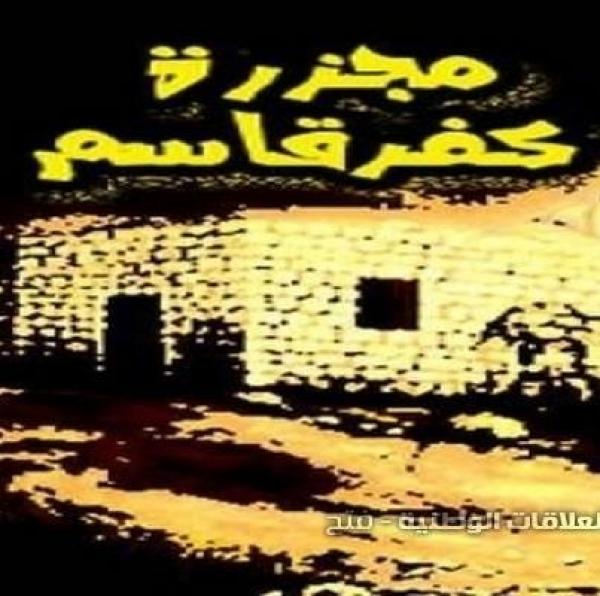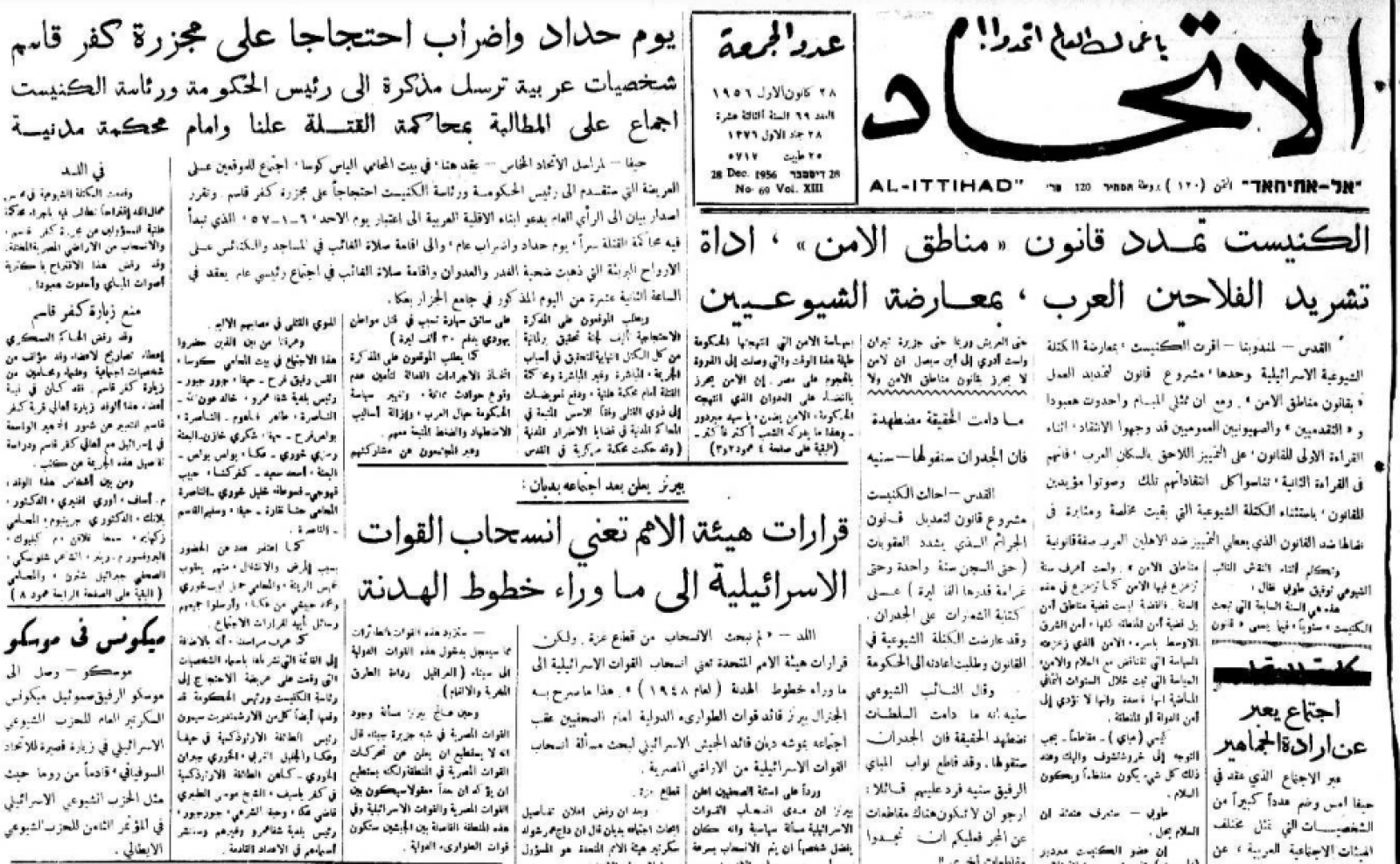Kafr Qasim entrance, the ‘citizens’ massacre
The Kafr Qassim massacre took place on the first day of the British-French-Israeli aggression against Egypt in 1956, following the nationalisation of the Suez Canal by Egypt under Gamal Abdel Nasser, and during the days of military rule that Israel imposed on Arab citizens. The Israeli army command stationed on the Israel-Jordan border announced on 29 October 1956 a curfew in the Arab villages inside Israel that were adjacent to the border (Kafr Qasim, Al-Tira, Kafr Barra, Jaljulia, Al-Taybeh, Qalansuwa, Bir Al-Sikka and Ibthan), in anticipation of a potential battle on the Jordanian borders. Later evidence revealed that the Kafr Qasim massacre had been carried out as part of the ‘mole’ plan which was aimed at intimidating and deporting the Palestinians from the ‘Triangle’ area (between the 1948 borders and the West Bank, which was part of Jordan at the time), where Kafr Qasim was located.
The massacre happened on the evening of 29 October 1956, in the form of nine separate shooting incidents, from 5 until 6, following a curfew that was imposed by the Israeli army command on the residents of Kafr Qasim and other Arab villages adjacent to the Jordanian border at the time, in preparation for launching a war on Egypt. Commander Zvi Tzur passed the orders to the field officers and brigades, while the task of implementing the curfew was assigned to the Border Guard unit led by Major Shmuel Mellinki, under the direct leadership of the commander of the army battalion stationed on the border, Issachar Shadmi. Next, Shadmi ordered that curfew be implemented from 5 PM until 6 AM of the following day. Based on the chronological history of the massacre, Shadmi had instructed Malinki to implement the curfew with an iron fist, without arrests, but by using force against violators. And when asked about the fate of those unaware of the curfew, Shadmi replied: ‘May they rest in peace.’
The mukhtar of the village was informed only half an hour before the curfew began, and he warned that hundreds of villagers were working outside the village and had not returned home yet, and a half-an-hour notice was too short to inform them about the curfew. However, the army delegate replied that they would be ‘taken care of’. Half an hour later, at 5 PM, the massacre began as four border guard teams situated at the entrances to the village started to shoot dead anyone who was outside, including all those returning to the village at the time.
Within the scope of one hour, 43 people were shot dead west of the village and 3 others were killed north of it. Inside the village two people died in the incident. Among the martyrs in Kafr Qasim in general were 9 women, 4 girls, 17 children and a boy under 18, including 5 children under 10. The shooting inside the village was intense and targeted almost every household, and it resulted in the injury of 18 people.

Images

References
Kafr Qasim massacre : a political biography,Adam Raz, 2018
Dar Al-Jalil for Publishing, Palestinian Studies and Research. & Emile Habibi, Study: "Kafr Qassem, The Political Massacre", 1976